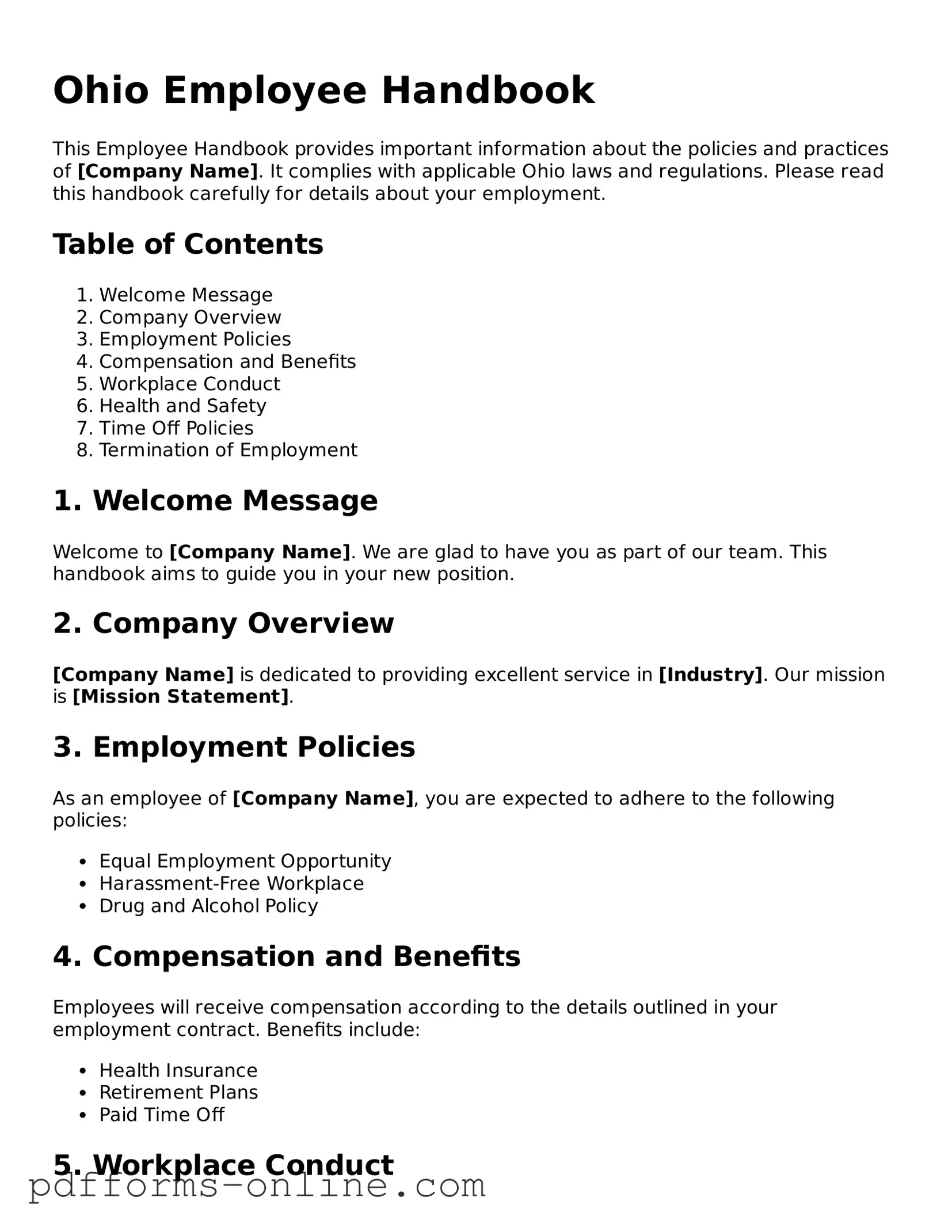Ohio Employee Handbook
This Employee Handbook provides important information about the policies and practices of [Company Name]. It complies with applicable Ohio laws and regulations. Please read this handbook carefully for details about your employment.
Table of Contents
- Welcome Message
- Company Overview
- Employment Policies
- Compensation and Benefits
- Workplace Conduct
- Health and Safety
- Time Off Policies
- Termination of Employment
1. Welcome Message
Welcome to [Company Name]. We are glad to have you as part of our team. This handbook aims to guide you in your new position.
2. Company Overview
[Company Name] is dedicated to providing excellent service in [Industry]. Our mission is [Mission Statement].
3. Employment Policies
As an employee of [Company Name], you are expected to adhere to the following policies:
- Equal Employment Opportunity
- Harassment-Free Workplace
- Drug and Alcohol Policy
4. Compensation and Benefits
Employees will receive compensation according to the details outlined in your employment contract. Benefits include:
- Health Insurance
- Retirement Plans
- Paid Time Off
5. Workplace Conduct
We expect all employees to act with integrity and respect. Key points include:
- Dress Code: [Dress Code Policy]
- Attendance: [Attendance Policy]
- Confidentiality: [Confidentiality Policy]
6. Health and Safety
Safety is our priority. All employees must follow safety guidelines. Report any hazards to your supervisor immediately.
7. Time Off Policies
We provide various types of time off:
- Sick Leave
- Vacation
- Bereavement Leave
8. Termination of Employment
Employee termination may occur due to a variety of reasons, including but not limited to:
- Poor Performance
- Violation of Company Policy
- Resignation
Acknowledgment of Receipt
I, [Employee Name], hereby acknowledge receipt of the Ohio Employee Handbook and understand my responsibilities as an employee of [Company Name].
Signature: _____________________________
Date: ______________________________
